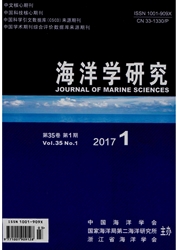

 中文摘要:
中文摘要:
南海北部大陆边缘的许多盆地都发现了裂后沉降异常,位于深水陆坡区的白云凹陷是其中的典型代表。本文采用盆模软件Temis Suite 2007对穿过白云凹陷的3条地震剖面进行回剥分析,观测其不同时间基底的垂向运动特征,并将其与MCKENZIE经典拉张模型计算的理论裂后沉降值进行对比,发现白云主凹中心的裂后异常沉降量最大超过2.6km,白云南凹最大异常沉降量接近2km,高于白云凹陷北部边缘的异常沉降。凹陷东部的裂后沉降作用强于凹陷西部。对沉降曲线的研究发现,白云凹陷在中中新世(16.5~10.5Ma)期间有一段沉降明显加速的过程,白云南凹尤为明显,可能与南海扩张停止事件有关。白云凹陷发育了巨厚的沉积,并且呈韧性伸展状态,本文认为下地壳流可能是导致白云凹陷裂后异常沉降最主要的因素。
 英文摘要:
英文摘要:
Post-rift subsiding anomalies have been discovered in many basins in the northern continental margin of South China Sea, of which Baiyun Sag is a typical one. We used software Temis Suite 2007 to build the backstripping model of three NNW--SEE-oriented seismic profiles crossing the Baiyun Sag, and analyzed the post-rift subsidence. The results show that the Baiyun Sag experienced anomalous post-rift subsidence. Compared with the Mckenzie's classic port-rift subsidence model, the Main Baiyun Sag subsided over 2.6 km deeper and the Southern Baiyun Sag subsided nearly 2 kin. An accelerated subsidence stage could be conducted during 16.5~10.5 Ma, which might relate to the end of sea-floor spreading in the South China Sea. The ductile extension and extreme quick and thick deposition in the Baiyun Sag indicate that the lower- crustal flow might have been the mechanism for the anomaly subsidence.
 同期刊论文项目
同期刊论文项目
 同项目期刊论文
同项目期刊论文
 期刊信息
期刊信息
